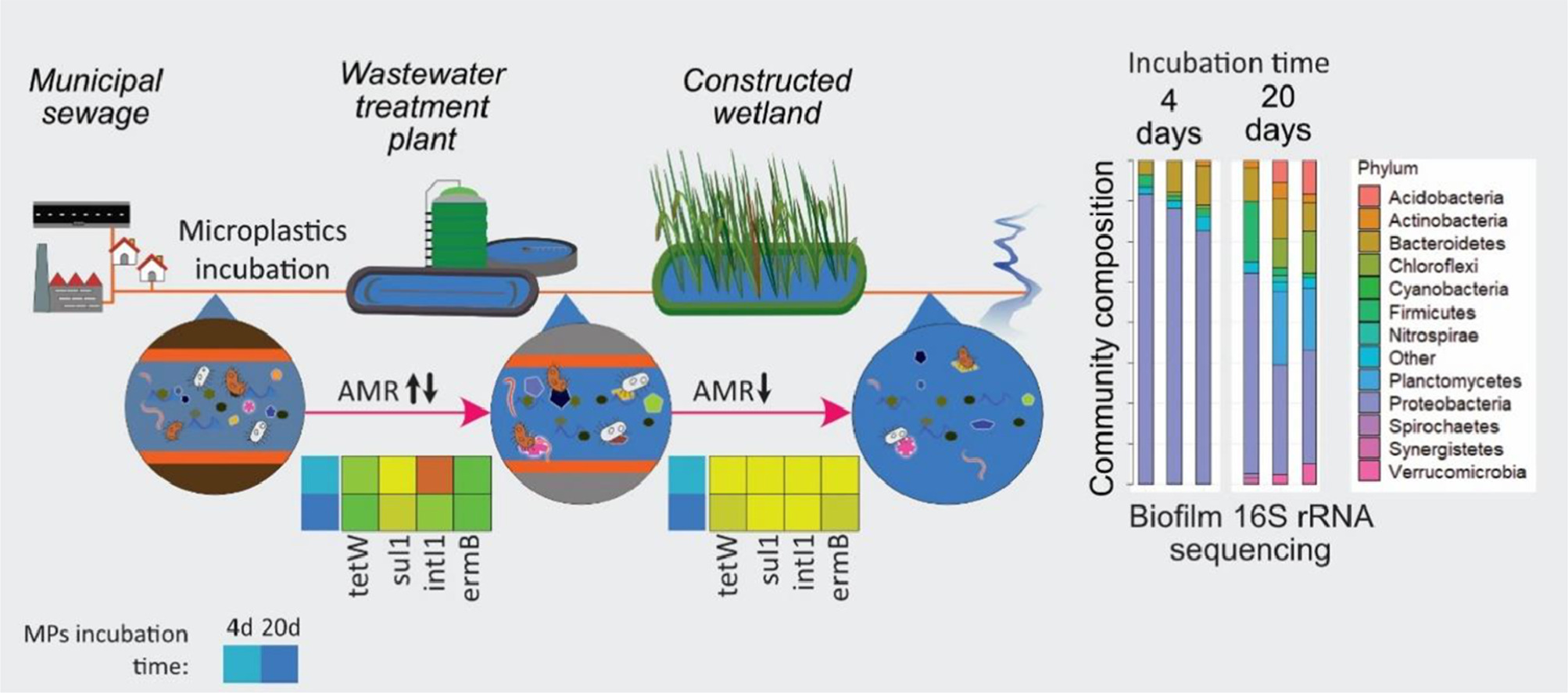This study investigates the establishment and dynamics of microplastic-associated biofilms and their associated AMR genes during a conventional full-scale wastewater treatment process combined with a constructed wetland polishing step. The researchers conducted sequential colonization experiments with MPs at different stages of the wastewater treatment process, including raw sewage, treated effluent, and the constructed wetland. Two scenarios were tested: one where the constructed wetland served as a polishing step and another where it was the primary recipient of sewage-inoculated microplastics.
Microplastics (MPs), small plastic particles less than 5mm in size, have become a ubiquitous environmental pollutant, accumulating in various ecosystems including freshwater bodies. Their persistence and widespread distribution raise concerns about their potential impacts on aquatic ecosystems and human health. One emerging concern is the colonization of MPs by biofilms containing pathogens and antimicrobial resistance (AMR) genes, which can pose risks to both environmental and human health.
- Microbial Community Dynamics on Microplastics (MPs):
- Microplastic-associated biofilms exhibited increased microbial diversity over time, with distinct community compositions at different stages of the wastewater treatment process.
- Proteobacteria were the primary colonizers of MPs, with shifts in dominant families observed over incubation time and treatment stages.
- Transition through wastewater treatment stages led to changes in biofilm composition, influenced by variations in nutrient availability and oxygen levels.
- MPs transferred directly into constructed wetlands (CWs) showed shifts in anaerobic populations, with Firmicutes replaced by Planctomycetes and Bacteroidetes.
- Fate of Pathogens in Microplastic-Associated Biofilms:
- MPs in raw sewage harbored up to 25% relative abundance of antimicrobial resistant ESKAPE pathogens and other WHO-listed priority pathogens.
- Passage through wastewater treatment stages led to a steady decrease in pathogen abundance on MPs, with a significant reduction observed after treatment.
- Aeromonas, Klebsiella, and Streptococcus were key pathogenic genera correlated with antimicrobial resistance in microplastic-associated biofilms.
- Antimicrobial Resistance (AMR) Dynamics in Microplastic-Associated Biofilms:
- AMR genes (e.g., sul1, ermB, tetW, intiI1) exhibited variable abundance patterns on MPs across treatment stages and incubation times.
- While some AMR genes showed stable or decreasing relative abundance, others exhibited fluctuations, with tetW and ermB showing more than one order of magnitude variability.
- The presence of predatory bacteria (e.g., Bdellovibrionaceae) on MPs biofilms suggested potential mechanisms for controlling pathogenic populations.
- Effect of Constructed Wetlands (CWs) on Mitigation of Microplastic-Associated Pathogens and AMR Spread:
- CWs served as a beneficial polishing step in reducing AMR load on MPs exported from wastewater treatment plants (WWTPs).
- MPs incubated in CWs exhibited consistent AMR decrease, independent of incubation time, contributing to over 99% reduction in AMR and pathogenic load when combined with WWTP treatment.
- Future Directions:
- Further studies should address seasonal variability in the fate of microplastic-associated biofilms, particularly in CWs, which may show performance variations under different weather conditions.
- High-throughput sequencing approaches could provide more detailed insights into the dynamics of biofilm resistomes in response to treatment-specific and temporal variability.
Link to the article : https://tinyurl.com/yw8fxxjd
